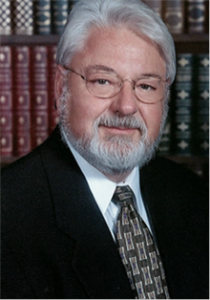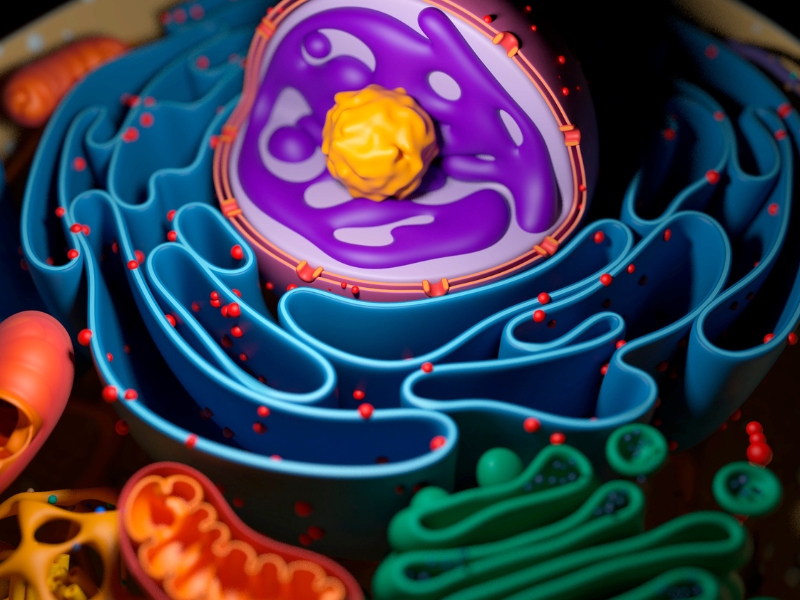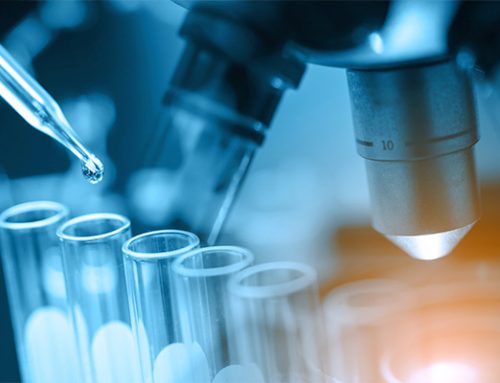
Energy in the form of ATP molecules is synthesized in the mitochondria in the cells. With insufficient availability of Coenzyme Q10, we get low energy synthesis. With low energy, we exercise less. With too little Coenzyme Q10 and less exercise, the mitochondria — the organelles that synthesize ATP — tend to atrophy and eventually cease to function properly.
Coenzyme Q10 has important functions in the body: energy synthesis, antioxidant activity, and stabilization of cell membranes. Energy synthesis takes place in the mitochondria of the cells. This is important to know. Energy synthesis takes place in the mitochondria of the cells. Every cell contains some very small oblong bean-shaped organelles called mitochondria. The mitochondria have both an inner and an outer membrane.
The mitochondria in the cells and Q10
These mitochondria vary considerably in their size and in their numbers in the individual cells. Typically, mitochondria are 60 – 75 angstroms thick. That is, they are 60 – 75 ten-billionths of a meter thick. The length of the mitochondrion is approximately 1 to 10 micrometers, much too small to see. By comparison, an average strand of human hair is 60 – 80 micrometers in diameter (= 600,000 – 800,000 angstroms).
The range of the number of mitochondria in the individual cells extends from only a few mitochondrion in a cell to perhaps as many as 2000 mitochondria in a cell. Dr. William Judy of the SIBR Research Institute estimates that 5 percent of the body’s energy is produced in the outer membrane of the mitochondria in the process of converting food substances to NADH. (NADH is the reduced form of Nicotinamide Adenine Dinucleotide (NAD), a coenzyme that is found in all living cells.)
The process of energy synthesis and Q10
Then, Dr. Judy says, the remaining 95 per cent of the energy synthesis in the cells occurs in the inner membrane of the mitochondria when the NADH from the outer membrane is converted to units of ATP in the electron transfer process. The fat-soluble Coenzyme Q10 and the water-soluble protein Cytochrome C are the facilitators of the electron transfer process.
Of the components that are necessary for energy synthesis – NADH, Cytochrome C, and Coenzyme Q10 – frequently, according to Dr. Judy, it is the Coenzyme Q10 that is not available in sufficient quantities.
The number and distribution of mitochondria
DNA, the carrier of genetic information, is present in all mitochondria. DNA is the code that directs the production of the proteins that carry out the reproduction of the mitochondria. We know that physically active and trained people have greater numbers of mitochondria in cardiac muscle and in skeletal muscle than out-of-shape and sedentary people do. In other words, exercise and training help to increase the number and distribution of mitochondria in the cells, and the mitochondria, in turn, synthesize energy in the cells.
Inadequate supplies of Q10
In cases in which muscles weaken or atrophy, the mitochondria can be seen to be abnormal in size and shape and distribution. Many of them cease to be functional. Dr. Judy says that the deterioration of the mitochondria occurs in adults whenever the Q10 concentrations in the blood fall below the level of 0.55 micrograms per milliliter, and below -0.20 ug/ml in the cardiac cell.
In cases in which individuals have a known Coenzyme Q10 deficiency, supplementation with a well-absorbed lipid-based ubiquinone Q10 preparation can increase the energy synthesis process in the mitochondria and can result in improved health condition and improved quality of life.
Mitochondrial disorders and Q10
In the medical literature, several genetic and non-genetic mitochondrial disorders have been described. In many of these disorders, a low concentration of Coenzyme Q10 is positively associated with the disorder and with the resultant reduced energy synthesis. In conditions of low Q10 concentrations in blood and tissue, the mitochondria dry up and change shape and size, and they clump together instead of being distributed evenly throughout the cell.
These are some of the clinical low-energy conditions that are positively associated with low concentrations of Coenzyme Q10:
• chronic fatigue syndrome
• chronic heart failure
• Huntington’s chorea
• muscular dystrophy
• multiple sclerosis
• Parkinson’s disease
• Prader-Willi syndrome
• some forms of cancers
Some years ago, Dr. Karl Folkers, Dr. Judy, and Swedish researchers measured plasma Q10 levels in nearly 1400 cancer patients. All of the cancer patients had lower than normal Q10 for their age. The sicker the patient, the lower the plasma Q10.
Low energy conditions and Q10
Low energy conditions can occur from other causes than mitochondrial dysfunction, whether genetic or non-genetic. Dr. Judy mentions the following possible causes of the low-energy syndrome:
• digestive disorders
• endocrine disorders
• increasing age
• poor nutrition
• Vitamin B deficiencies
• Drugs the interfere with or reduce CoQ10 absorption
Coenzyme Q10 deficiency a factor in low energy
And, of course, Dr. Judy includes Coenzyme Q10 deficiency on his list of the possible causes of low energy. Why does a Coenzyme Q10 deficiency occur? It could be that a dietary deficiency is at fault, resulting in a lack of some of the necessary substances used in the 17-step process by which the body synthesizes Coenzyme Q10. Or there could be some sort of overall dysfunction in the biochemical mechanisms that are involved in the synthesis of Coenzyme Q10. We know, for example, that the body synthesizes less and less Q10 with increasing age after the mid-20s. Most people over the age of 40 – 45 need to consider seriously taking a well-formulated ubiquinone Q10 supplement.
Children and young adults and Q10
Fortunately, it is not common for children and young adults to lack adequate quantities of Q10. Over the years, Dr. Judy has been concerned about the treatment and care of one relatively small group of children who are, seemingly, born with an inability to synthesize or utilize Q10.
Prader-Willi syndrome children and Q10
Dr. Judy’s concern, in addition to his concern for chronic heart failure patients and for patients taking statin medications, is for the Prader-Willi syndrome children. These are children afflicted with a complex genetic condition that results in muscle weakness, stunted growth, and delayed development. Some researchers have had success using human growth hormone to help the Prader-Willi Syndrome children develop physically.
Worldwide, the Prader-Willi Syndrome occurs in anywhere from 1 in 10,000 births to 1 in 30,000 births. In infancy, the children suffer from feeding difficulties. Then in childhood, they develop insatiable appetites, which, combined with an inability to convert carbohydrates to energy, result in overeating and obesity. The Prader-Willi children often have mild to moderate intellectual impairment and learning disabilities. They also have behavioral problems in many cases.
Q10 supplementation
In Dr. Judy’s experience, the Prader-Willi Syndrome children with Coenzyme Q10 deficiency but with somewhat normal mitochondria can be helped significantly, already from infancy, by Q10 supplementation. If, on the other hand, the children’s mitochondria are undeveloped or are non-functional, then the Q10 supplementation may have limited effect at best.
Combination of exercise and Q10
The best hope for rejuvenating shriveled and misshapen mitochondria is a combination of exercise and Coenzyme Q10. Admittedly, this combination is a bit of a catch-22. We need functioning mitochondria and adequate supplies of Q10 to have the energy to exercise, and we need exercise to shape up the mitochondria.
Helping Prader-Willi Syndrome children with Q10 treatment
In 1999, Dr. Judy did a one-year 20-patient study of Prader-Willi Syndrome children aged 3 months to 6 years (mean age: 3.2 years). The study involved age- and sex-matched controls.
In the Prader-Willi Syndrome group, the plasma Q10 concentration in the youngest child was 0.24 mcg/ml, and it was 0.67 mcg/ml in the oldest child (mean = 0.38 mcg/ml). In the control group, the youngest child had a 0.48 mcg/ml plasma Q10 level, and the oldest child had a 0.69 mcg/ml (mean =0.68 mcg/ml).
The Prader-Willi Syndrome children responded well to an adjuvant Q10 treatment, and they tolerated the Q10 treatment well. The children on nasogastric feeding tubes (n=3) became able to suckle in as little as 10 days after starting Q10 treatment. That is to say, within 10 days of Q10 treatment, they had the energy to suckle.
The Prader-Willi Syndrome children who were of walking age but could not walk were taking their first steps within two to three weeks after starting the Q10 treatment. Generally, Prader-Willi Syndrome children not on a Q10 treatment do not start to walk until they are over three years of age. With adjuvant Q10 treatment, Dr. Judy and his colleagues were able to shift the development of the Prader-Willi Syndrome children back to almost normal.
In Dr. Judy’s experience, the normal Prader-Willi Syndrome child cannot ride a two-wheeled bicycle. Those Prader-Willi Syndrome children who take Q10 can ride bicycles by the age of 6-7 years.

Together with Dr. Willis W. Stogsdill, Dr. William V. Judy has worked to provide Coenzyme Q10 to Prader-Willi children, who are unable to synthesize Q10 themselves.
Providing Q10 to families with Prader-Willi Syndrome children
In the year 2000, Dr. Judy and his colleague Dr. Stogsdill created the company Cyto-Med to provide Coenzyme Q10 to families with Prader-Willi Syndrome children. They wanted to alleviate the problems caused by the Prader-Willi Syndrome children’s inadequate synthesis of Coenzyme Q10. Since 2000, Cyto-Med has been shipping Coenzyme Q10 to families in 14 countries
Q10 deficiencies and genetic syndromes
In our conversation, Dr. Judy mentioned that, in 2007, the Mitrochondrion Journal published a special supplement (No 7) with 22 papers on children and adults with genetic syndromes and CoQ10 deficiencies. The interesting thing about these publications was that for each of the syndromes the gene involved was different. It appears that there may be different genes responsible for CoQ10 synthesis in different organ systems. This may explain the reason for different CoQ10 concentrations in different tissues and organs.
Rationale for Coenzyme Q10 supplementation
Supplementation with a well-documented ubiquinone Q10 supplement can add enough Q10 to the decreasing quantities of Q10 synthesized in the body and ingested at meal time to make a difference in our energy levels as well as improve the health and functioning of our hearts.









Leave A Comment